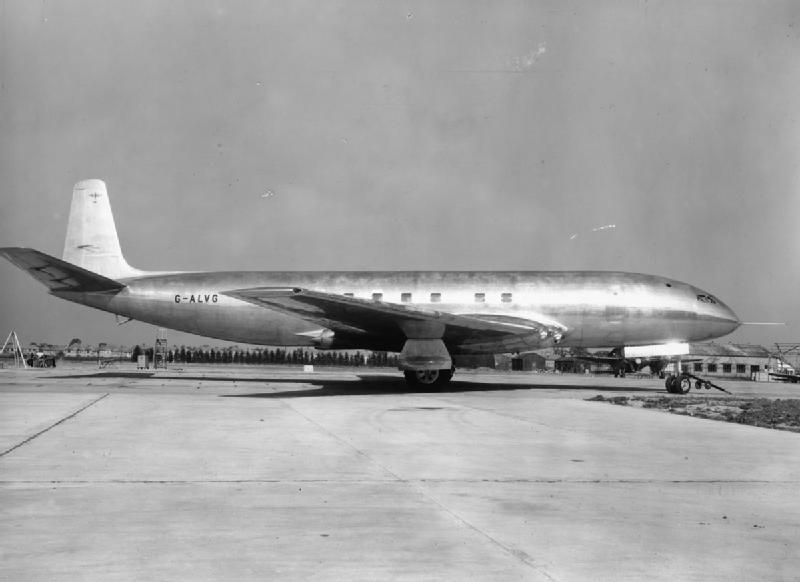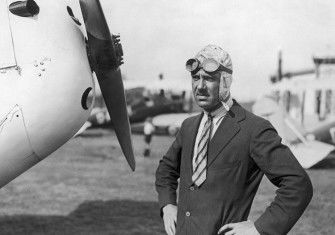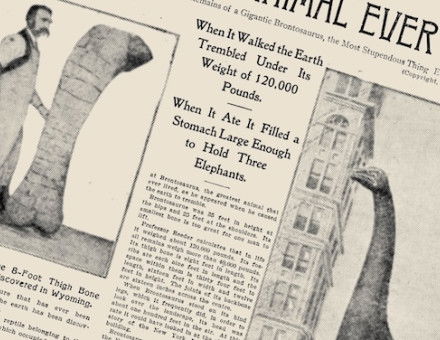The Maiden Flight of the Comet
Richard Cavendish describes the maiden flight of the world's first jet-propelled airliner, on July 27th 1949.
 The world's first jet-propelled airliner took to the skies at Hatfield in Hertfordshire, the home of the de Havilland Aircraft Company. The plane was piloted by Group Captain John Cunningham, the wartime fighter ace, and as it happened, the day was Cunningham's thirtieth birthday . Taxiing runs were made first and then a hop or two watched by the press, who to their later irritation had all gone away by the evening when Cunningham and his crew took the plane up to 10,000ft, came down to fly 100ft above the runway in salute to their colleagues on the ground and landed after thirty one minutes. Powered by four Ghost turbo-jet engines, the plane was designed to carry thirty six first-class passengers at a height of 40,000ft and a speed of close to 500mph.
The world's first jet-propelled airliner took to the skies at Hatfield in Hertfordshire, the home of the de Havilland Aircraft Company. The plane was piloted by Group Captain John Cunningham, the wartime fighter ace, and as it happened, the day was Cunningham's thirtieth birthday . Taxiing runs were made first and then a hop or two watched by the press, who to their later irritation had all gone away by the evening when Cunningham and his crew took the plane up to 10,000ft, came down to fly 100ft above the runway in salute to their colleagues on the ground and landed after thirty one minutes. Powered by four Ghost turbo-jet engines, the plane was designed to carry thirty six first-class passengers at a height of 40,000ft and a speed of close to 500mph.
Before the end of the war, a government-appointed committee under Lord Brabazon of Tara had pronounced that the jet engine offered Britain the best chance of taking the lead in the development of transport aircraft. Geoffrey de Havilland was a member of the committee and a plane to fill the bill was developed under wraps at Hatfield by the company's chief designer, R. E. Bishop. Work began in 1945 on a prototype, which the Ministry of Supply called Swallow and de Havilland's unromantically called TG283. Sir Geoffrey's eldest son, another Geoffrey, took it up for its initial flight in May 1946. Tragically he was killed in the second prototype, TG306, when it crashed over the Thames estuary in September. John Cunningham was his successor as the company's chief test pilot.
Carrying resolutely on, de Havilland's resurrected the name Comet from an earlier speedster, produced in 1934 for the England-Australia air race (the Comet Hotel at Hatfield was built in the shape of it). The new airliner was first shown to the public at Farnborough in September 1949 and made test trips abroad. In 1950 Cunningham broke the London-Rome, London-Copenhagen and London-Cairo records in it.
In 1951 a production line at Hatfield started turning out Comets for BOAC, which to great acclaim made the world's first pure jet flight carrying fare-paying passengers in May 1952, to Johannesburg. A regular BOAC passenger service taking a day and a half between London and Tokyo started in 1953. National pride soared and orders came pouring in from foreign airlines. American Aviation magazine commented: 'Whether we like it or not, the British are giving the US a drubbing in jet transport.'
Sadly, what had started so well was to end in tears as Comets were found to suffer from structural failures. In January 1954 one leaving Rome crashed into the sea off Elba, killing all thirty five passengers on board, and months later another crashed with twenty one lives lost. It was still a BOAC Comet 4 which made the first regular jet airline crossing of the Atlantic in 1958, but as all the world's major airlines took to jet aircraft, it was the American Boeing 707 which dominated the sky.





